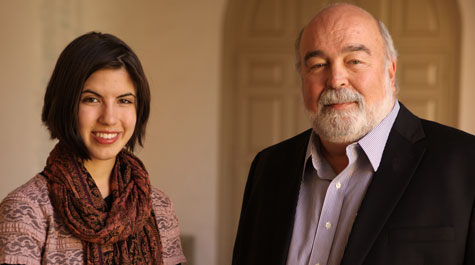Commonwealth Center inaugural projects focus on sea level rise
William & Mary’s Commonwealth Center for Energy and the Environment has launched its first round of projects, which have an emphasis on the effects of the rise of sea level.
Dennis Taylor, who is coordinating the Commonwealth Center, delivered a recent report to William & Mary President Taylor Reveley and Provost Michael Halleran outlining the CCEE inaugural efforts.
The Commonwealth Center was established in 2012 as a combination think tank and incubator to harness skills and expertise of William & Mary faculty to tackle large problems that require interdisciplinary and interdepartmental approaches.
Taylor explained that two of the three funded projects will be addressed through Environmental Enquiry Groups (EEGs)—groups of five to eight faculty who will explore a particular environmental issue or question. The third is a developmental grant.
The inaugural Commonwealth Center projects are:
Unnatural
Disaster: Coastal Flooding, Sea Level Rise and Environmental Justice In
Virginia’s Tidewater Region.
Lead faculty: Shana
Jones, School of Law.
This EEG group will examine how coastal flooding and sea level rise exposes social vulnerability and will investigate questions of environmental justice in Virginia’s Tidewater Region. Contributing faculty represent Arts & Sciences, School of Law and VIMS, in the natural and social sciences, law and humanities.
Sea Level Rise and Storm Surge
Adaptation.
Lead Faculty: David
Forrest, Virginia Institute of Marine
Science, and Stuart Hamilton, Center for Geospatial Analysis.
This EEG builds on an award-winning, innovative storm surge model developed at VIMS. This model forms the basis for a broader interdisciplinary EEG based in VIMS and the W&M Center for Geospatial Analysis that will produce scenarios detailing the vulnerabilities and impacts of future storms on critical infrastructure in the Chesapeake Region. Contributing faculty represent Arts & Sciences, School of Law and VIMS in the natural and social sciences, law and humanities.
A Feasibility Study for
Developing a Critical Zone Observatory (CZO) Focused on Energy-Related
Pollutants in Coastal Plain Watersheds.
Lead faculty: Greg
Hancock, Arts & Sciences and Carl Friedrichs, VIMS.
The developmental group will assess the feasibility of developing a National Science Foundation-funded Critical Zone Observatory (CZO) site in the Virginia coastal plain. The funding will support a two-day summer workshop to develop the vision and goals for the CZO, identify potential collaborators and select potential field locations for the CZO.
Taylor said a second round to solicit additional proposals will be announced shortly with a submission deadline of July 1 2013. He added that he would like to see broader participation on the part of faculty in the humanities and arts in second-round proposals.















